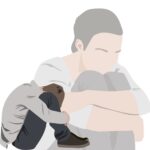Posttraumatic stress disorder (PTSD) is a common and intricate psychiatric problem that develops as a result of experiencing traumatic experiences, greatly affecting an individual’s mental health. PTSD is a condition that can cause a variety of symptoms, affecting cognitive abilities, emotions, physical sensations, and behavior. This can result in long-term difficulties and a higher likelihood of having other mental diseases, as well as an increased vulnerability to suicide. Empirical evidence reveals that people who have PTSD are more likely to have health problems, such as somatoform, cardiorespiratory, musculoskeletal, gastric, and immune system issues. It is also linked to a lot of other mental health problems, a higher chance of suicide, and a big financial load. Studies show that at any given period, around 3% of individuals suffer from PTSD. The lifetime prevalence rates range from 1.9% to 8.8%.
The DSM 5 TR provides an extensive criterion for the diagnosis of PTSD. This criteria is outlined as follows:
Diagnostic Criteria
In Individuals Above Age 6
A. Actual or threatened death, serious harm, or sexual assault in any of the following ways:
1. Directly experiencing trauma.
2. Being present when others experienced the event(s).
3. Learning that a close family member or acquaintance experienced the trauma. Violence or accident must have caused a family or friend’s death.
4. Repeated or intense exposure to unpleasant aspects of the traumatic event(s) (e.g., first responders gathering human remains; police personnel regularly exposed to child abuse details).
Note: Unless work-related, Criterion A4 does not apply to electronic media, television, movies, or photos.
B. One or more of the following intrusive symptoms linked with the traumatic event(s) arising afterward:
1. Recurring, involuntary, intrusive trauma recollections.
Note: Children older than 6 years may play repetitively about the trauma.
2. Recurring painful nightmares about the tragedy.
Note: Children may have scary, unrecognizable nightmares.
3. Dissociative reactions like flashbacks that make the person think or act like the incident is happening again. The most severe response is complete loss of consciousness of present surroundings.
Note: Children may play trauma-specifically.
4. Intense or protracted psychological suffering at exposure to internal or external signals representing the trauma.
5. Strong physiological responses to internal or external factors that represent the trauma.
C. After the traumatic event(s), persistent avoidance of stimuli associated with them, as shown by one or both of the following:
1. Avoiding painful memories, thoughts, or feelings regarding the experience.
2. Avoiding external reminders (people, places, conversations, activities, items, circumstances) that evoke upsetting memories, thoughts, or feelings regarding the traumatic event(s).
D. Negative cognitive and emotional changes related to the traumatic event(s), commencing or worsening afterward, as shown by two or more of the following:
1. Loss of memory of a significant trauma experience (usually due to dissociative amnesia, not head damage, alcohol, or drugs).
2. Extreme negative thoughts or expectations about oneself, others, or the world (“I am bad,” “No one can be trusted,” “The world is completely dangerous,” “My whole nervous system is permanently ruined”).
3. Recurrent, erroneous thoughts regarding the source or effects of the trauma that lead to self- or other-blame.
4. Chronic terror, horror, rage, remorse, or humiliation.
5. Disinterest in important activities.
6. Disconnection from others.
7. Chronic inability to feel happy, satisfied, or loved.
E. Significant modifications in arousal and reactivity related to the traumatic event(s), commencing or worsening afterward, as shown by two or more of the following:
1. Irritated conduct and outbursts (without provocation) that involve verbal or physical hostility toward persons or objects.
2. Risky or dangerous activity.
3. Hypervigilance.
4. Exaggerated startle.
5. Concentration issues.
6. Sleep disruption (difficulty falling or staying asleep, restlessness).
F. Criteria B, C, D, and E disturbances last more than a month.
The disturbance produces clinically considerable distress or impairment in social, occupational, or other crucial areas of functioning.
H. The disturbance is not caused by medicine, alcohol, or any medical condition.
Specify if:
With dissociative symptoms: The individual has posttraumatic stress disorder symptoms and persistent or repeated symptoms of any of the following in reaction to the stressor:
1. Depersonalization: Feeling disconnected from and as if one were an outside spectator of one’s mental processes or body (e.g., feeling like one is in a dream, feeling unreal, or perceiving time flowing slowly).
2. Derealization: Persistent or recurring perceptions of unreality (e.g., the world is unreal, dreamy, remote, or distorted).
Note: This class excludes dissociative symptoms caused by drugs or medical conditions such as complex partial seizures.
Specify if:
With delayed expression: If the entire diagnostic criteria are not satisfied until at least 6 months after the occurrence (although certain symptoms may be immediate).
In Individuals Aged 6 and Below
A. Actual or threatening death, serious harm, or sexual assault in children under 6:
1. Directly experiencing trauma.
2. Being there while others, especially main caregivers, saw the event(s).
3. Learning that a parent or caregiver experienced trauma.
B. One or more of the following intrusive symptoms linked with the traumatic event(s) arising afterward:
1. Recurring, involuntary, intrusive trauma recollections.
Note: Playing out bothersome memories may not be distressing.
2. Recurring painful nightmares about the tragedy.
Note: The disturbing material may not be connected to the trauma.
3. Dissociative reactions (e.g., flashbacks) in which the youngster responds as if the experience is happening again. The most severe response is complete loss of consciousness of present surroundings. Play may recreate trauma.
4. Intense or protracted psychological suffering at exposure to internal or external signals representing the trauma.
5. Strong physiological responses to trauma reminders.
C. One or more of the following symptoms, showing persistent avoidance of stimuli or unfavorable modifications in cognitions and emotions linked with the traumatic event(s), must be present, beginning or worsening after the event:
Persistent Avoidance of Stimuli
1. Avoiding activities, locations, or physical reminders of the trauma.
2. Avoiding persons, discussions, or situations that trigger terrible memories.
Negative Alterations in Cognitions
3. Significantly elevated negative emotions (fear, guilt, sadness, humiliation, uncertainty).
4. Significantly reduced interest or engagement, including play restrictions.
5. Social withdrawal.
6. Consistently lower happy feelings.
D. Changes in arousal and reactivity related to the traumatic event(s), commencing or worsening afterward, as shown by two or more of the following:
1. Unprovoked anger and verbal or physical hostility toward persons or objects (including excessive temper tantrums).
2. Hypervigilance.
3. Exaggerated startle.
4. Concentration issues.
5. Trouble falling or staying asleep or restless sleep.
E. The disturbance lasts over a month.
F. It causes clinically substantial suffering or impairment in relationships with parents, siblings, classmates, or other caregivers or school conduct.
G. The disruption is not caused by medicine, alcohol, or any medical condition.
Specify if:
Dissociative symptoms: The individual has posttraumatic stress disorder symptoms and chronic or recurring symptoms of either:
1. Depersonalization: Feeling disconnected from and as if one were an outside spectator of one’s mental processes or body (e.g., feeling like one is in a dream, feeling unreal, or perceiving time flowing slowly).
2. Derealization: Persistent or recurring perceptions of unreality (e.g., the world is unreal, dreamy, remote, or distorted).
Dissociative symptoms must not be caused by a drug (e.g., blackouts) or a medical condition (e.g., complex partial seizures) to utilize this classification.
Specify if:
With delayed expression: If the entire diagnostic criteria are not satisfied until at least 6 months after the occurrence (although certain symptoms may be immediate).
Conclusion
PTSD symptoms emerge after exposure to one or more stressful incidents. Clinical manifestation of PTSD varies on the basis of the age of the individual. Sometimes fear-based re-experiencing, emotional, and behavioral symptoms prevail. Others may focus on negative thoughts and anhedonic or dysphoric moods. Some people have arousal and reactive-externalizing symptoms, while others have dissociative symptoms. Finally, some have a mix of symptoms. Identification of these symptoms and seeking required help on time is crucial to ensure the health and safety of the individuals.
I am a passionate and knowledgeable psychologist, with a Master of Philosophy (MPhil) in Psychology specializing in Counseling Psychology. Through my writing, I share my insights and thoughts on various psychiatric disorders, conduct analysis on films that touch on psychological issues, and explore other topics related to psychology, while also providing valuable information to psychology enthusiasts, students as well the general community.











